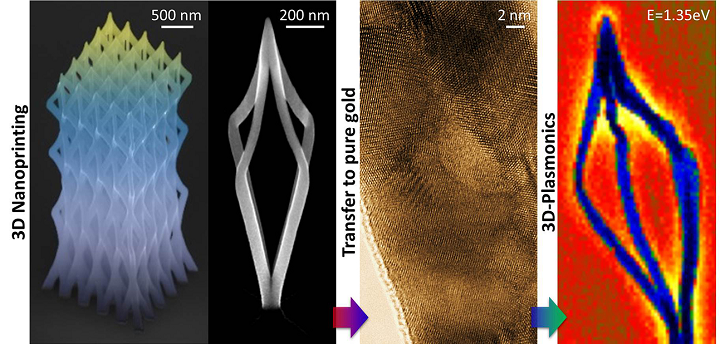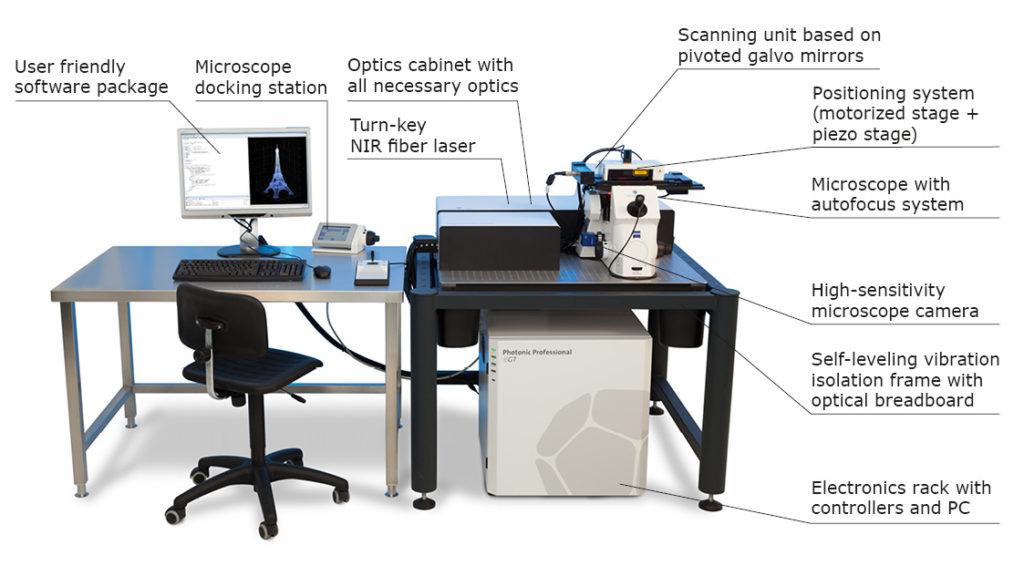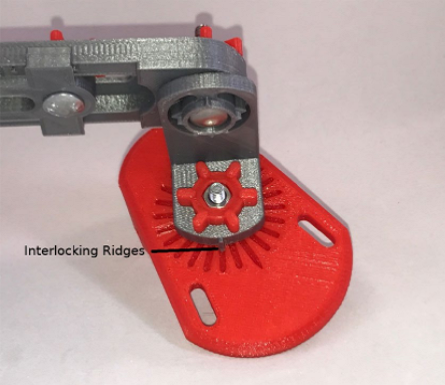“After all this, you have just got one little baby lathe four thousand times smaller than usual.¨ – Richard Feynman
For decades, humanity has searched for ways in which we can create nanoscale machines. Now, with companies such as UpNano, Femtoprint, and Atlant3D we are coming very close to these lofty, tiny goals. Micro Electromechanical Systems (MEMS), such as pressure sensors and accelerometers, have built a market worth over $10 billion a year using microelectronics and machines to create integrated mechanical and electrical devices. Tiny and inexpensive, these tools tell your phone that it is falling or measure your blood pressure. With further nanoscale manufacturing in the offing and developments in photonics ongoing, teeny, tiny machines will see a boost as they become more precise, more numerous, and smaller still.
The Trend towards Tiny 3D Printing
We must still be patient for the coming of the gray goo, however. Machining or 3D printing these devices will still be difficult and take time to industrialize. Similar ongoing developments, such as IoT sensors, labs on chips, microfluidics and more will be fellow travelers. Success in lab on a chip may propel micro-machining, make funds available for atomic layer deposition processes, or result in new standards for micro-machining itself. More investment could lead to cheaper lasers, which could make machining more accessible, increase the volume of these tiny machines, or make them cheaper to make. Miniaturization, meanwhile, is an ongoing process, which is driving more engineers to search for micro- and nano-sized solutions for their problems. We will now live in the era of miniaturization outlined above by Feynman in an amazing lecture (in a pink polo and shorts no less).

Focused electron beams are used to convert surface-bound molecules of gold and carbon into the gas phase and deposit them to construct precise 3D freestanding structures of pure gold. The ultra-sharp features produce free electron oscillations, or quasiparticles called plasmons, with high efficiency.
The 3D printing industry should also pay far more attention to MEMS; microfluidics, and to the nano- and micro-scale more generally, all of which additive technology could enable and use and which will have significant impacts on our lives. However, there is another possible development well within the technological bounds of our own technology that we could consider.

The Nanoscribe Photonic Professional GT nanoprinter.
3D Printing Larger Micro-machines
At additive manufacturing’s scale of centimeters and millimeters, our industry can also make machines. With 3D printing, it’s possible to make complex, less expensive, lightweight assemblies quickly and on demand—assemblies that can be modified on a whim with new iterations the next day and the day after that. We know that, to a certain extent, conductive materials and circuits can be 3D printed using electroninks and Optomec Aerosol Jet. AM is used to make a lot of devices, sensors, and other complex assemblies already.

Attachment of the footpads to the assembly via angle brackets with interlocking ridges to lock footpads into place.3
So, why not make MEMS devices but at a larger scale? They wouldn’t be as small or cheap when there are millions of exemplars. However, if you needed a mechanical electrical device that doesn’t necessarily need to be so tiny and only needed a small batch rather than a million units, it could work.
In some ways, this is already happening, but I think if we looked at AM’s ability to produce mechanical and electronic devices in complex assemblies at low volume, we would find hereto unknown applications for 3D printing technology. AM wouldn’t compete for a place in your next smartphone. However, for some applications, the short production runs and low volumes that 3D printing is ideal for could make a difference. In some cases, AM could make sensors, machines, technologies ,and properties that other manufacturing processes are currently unable to make. For some problems and challenges, integrated machines could be 3D printed to solve problems in a completely novel manner. AM could create machines customized to perform very small tasks for a long time or to rapidly solve a new problem. By producing assemblies cheaper and faster, AM could make a new way of making. Yes, there is still plenty of room at the bottom, but there is plenty of room at the top, too.
Subscribe to Our Email Newsletter
Stay up-to-date on all the latest news from the 3D printing industry and receive information and offers from third party vendors.
You May Also Like
3D Printing Unpeeled: New Arkema Material for HP, Saddle and Macro MEMS
A new Arkema material for MJF is said to reduce costs per part by up to 25% and have an 85% reusability ratio. HP 3D HR PA 12 S has been...
3D Printing News Briefs, January 20, 2024: FDM, LPBF, Underwater 3D Printer, Racing, & More
We’re starting off with a process certification in today’s 3D Printing News Briefs, and then moving on to research about solute trapping, laser powder bed fusion, and then moving on...
3D Printing Webinar and Event Roundup: December 3, 2023
We’ve got plenty of events and webinars coming up for you this week! Quickparts is having a Manufacturing Roadshow, America Makes is holding a Member Town Hall, Stratafest makes two...
Formnext 2023 Day Three: Slam Dunk
I’m high—high on trade show. I’ve met numerous new faces and reconnected with old friends, creating an absolutely wonderful atmosphere. The excitement is palpable over several emerging developments. The high...































